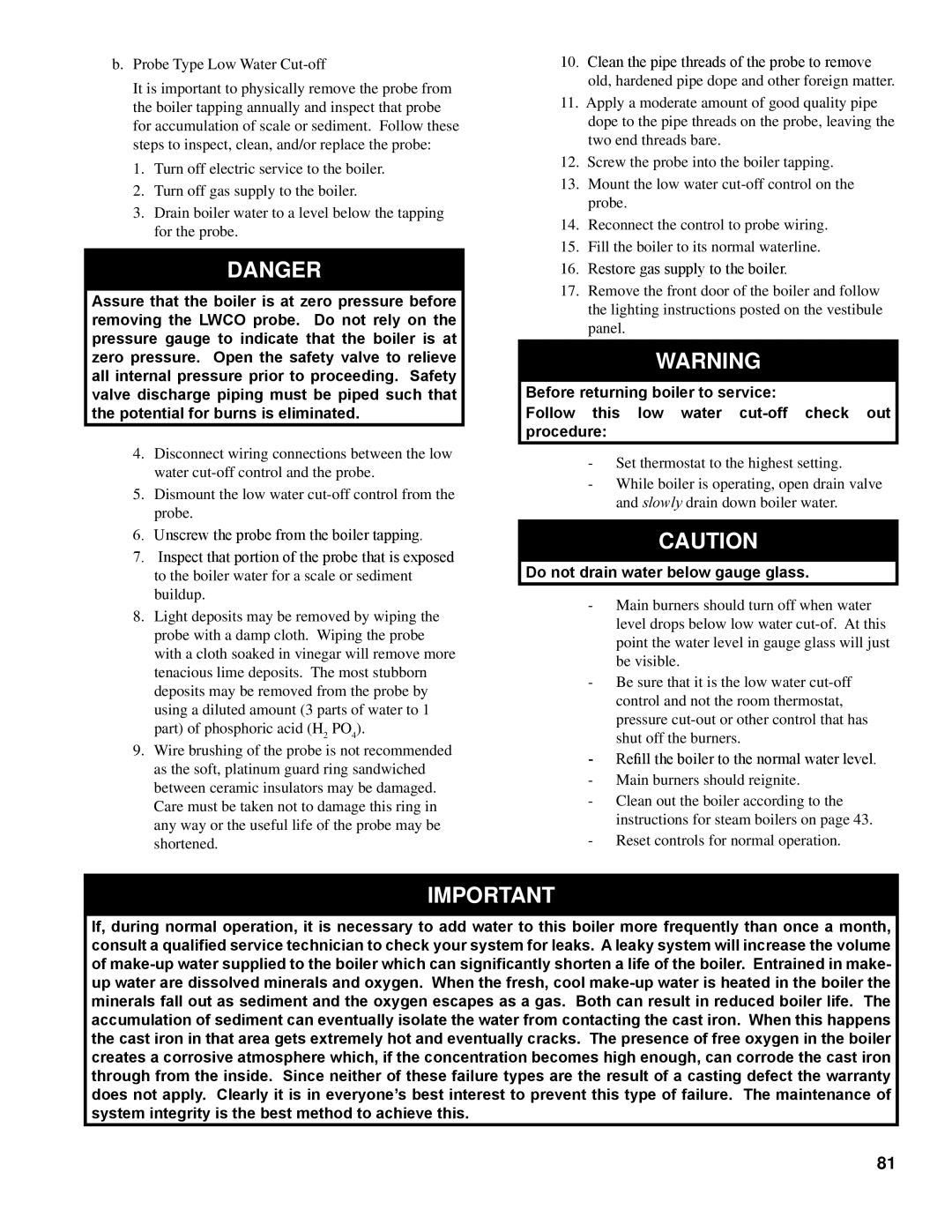
b.Probe Type Low Water
It is important to physically remove the probe from the boiler tapping annually and inspect that probe for accumulation of scale or sediment. Follow these steps to inspect, clean, and/or replace the probe:
1.Turn off electric service to the boiler.
2.Turn off gas supply to the boiler.
3.Drain boiler water to a level below the tapping for the probe.
DANGER
Assure that the boiler is at zero pressure before removing the LWCO probe. Do not rely on the pressure gauge to indicate that the boiler is at zero pressure. Open the safety valve to relieve all internal pressure prior to proceeding. Safety valve discharge piping must be piped such that the potential for burns is eliminated.
4.Disconnect wiring connections between the low water
5.Dismount the low water
6.Unscrew the probe from the boiler tapping.
7.Inspect that portion of the probe that is exposed to the boiler water for a scale or sediment buildup.
8.Light deposits may be removed by wiping the probe with a damp cloth. Wiping the probe with a cloth soaked in vinegar will remove more tenacious lime deposits. The most stubborn deposits may be removed from the probe by using a diluted amount (3 parts of water to 1 part) of phosphoric acid (H2 PO4).
9.Wire brushing of the probe is not recommended as the soft, platinum guard ring sandwiched between ceramic insulators may be damaged. Care must be taken not to damage this ring in any way or the useful life of the probe may be shortened.
10.Clean the pipe threads of the probe to remove old, hardened pipe dope and other foreign matter.
11.Apply a moderate amount of good quality pipe dope to the pipe threads on the probe, leaving the two end threads bare.
12.Screw the probe into the boiler tapping.
13.Mount the low water
14.Reconnect the control to probe wiring.
15.Fill the boiler to its normal waterline.
16.Restore gas supply to the boiler.
17.Remove the front door of the boiler and follow the lighting instructions posted on the vestibule panel.
WARNING
Before returning boiler to service:
Follow this low water
-Set thermostat to the highest setting.
-While boiler is operating, open drain valve and slowly drain down boiler water.
CAUTION
Do not drain water below gauge glass.
-Main burners should turn off when water level drops below low water
-Be sure that it is the low water
-Refill the boiler to the normal water level.
-Main burners should reignite.
-Clean out the boiler according to the instructions for steam boilers on page 43.
-Reset controls for normal operation.
IMPORTANT
If, during normal operation, it is necessary to add water to this boiler more frequently than once a month, consult a qualified service technician to check your system for leaks. A leaky system will increase the volume of
81
